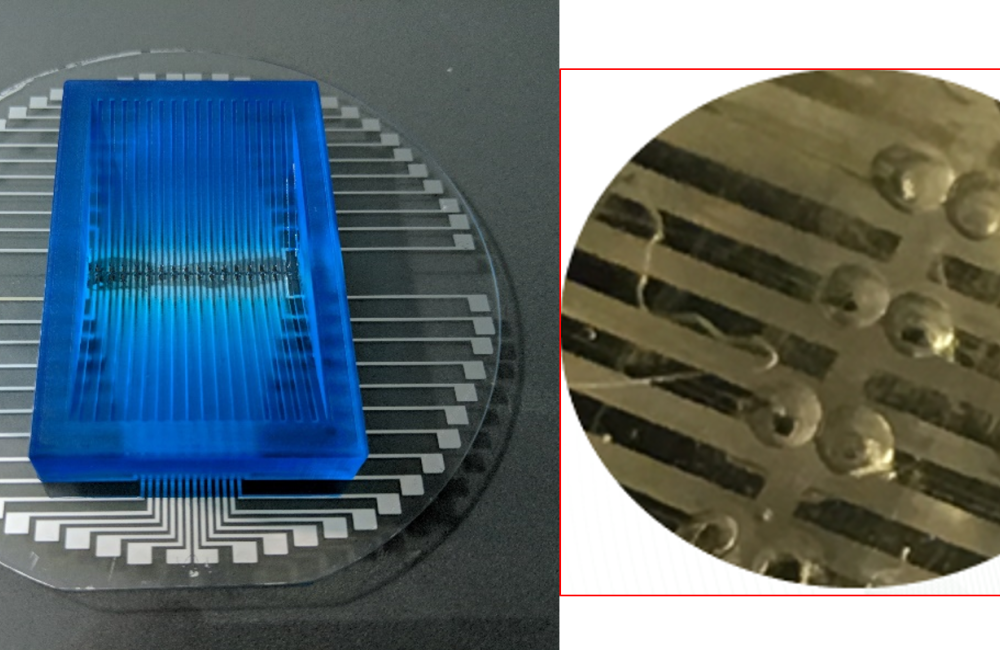3D-printed neuromorphic circuit consisting of biomembrane-based artificial synapses in a microfluidic device.
An ORNL research team has paired neural networks with neuromorphic hardware to perform complex computations, demonstrating the potential for computing platforms exponentially more powerful, and energy efficient, than today’s leading systems.
For the first time, a network consisting of synthetic, membrane-based synapses interfaced with solid-state neurons has performed complex computation on a neuromorphic device. Specifically, a team of researchers from ORNL and the University of Tennessee optimized an existing spiking neuromorphic training software framework called Evolutionary Optimization of Neuromorphic Systems, or EONS, on Titan and Summit to build appropriate networks based on data collected for EEG classification. Simulations run on Summit yielded a network capable of classifying EEG temporal data sets as epileptic or normal consisting of just six synapses and six neurons, with training and testing accuracies of 98.5%. Finally, 3D-printed microfluidic-based devices were fabricated onto silicon wafers with patterned silver electrodes to physically implement the network developed by EONS.
Neuromorphic computing relies on parallelism as well as co-location of memory and logic, in much the same way as the human brain, to enable powerful computing devices that consume significantly less energy consumption in a smaller physical footprint than traditional silicon-based architectures. Compared to prior neuromorphic devices, the devices described here consume significantly less power (0.1-10 nW), are low-cost, and scalable to support large-network computing applications.
Research team: Joseph S. Najem, Graham J. Taylor, Ryan J. Weiss, Md Sakib Hasan, Garrett Rose, Catherine D. Schuman, Alex Belianinov, C. Patrick Collier, and Stephen A. Sarles
Funding: This research was supported by the Laboratory Directed Research and Development Program of ORNL, managed by UT-Battelle, LLC, for the U.S. DOE. This research was conducted at the Center for Nanophase Materials Sciences, which is a DOE office of Science User Facility.
Publication: ACS Nano 2018 12 (5), 4702-4711. https://pubs.acs.org/doi/10.1021/acsnano.8b01282
Contact: Pat Collier, colliercp@ornl.gov



